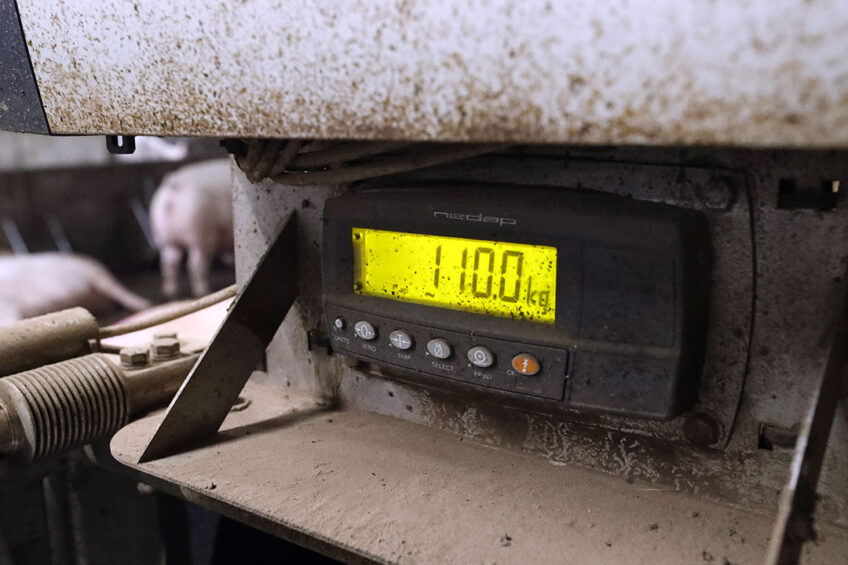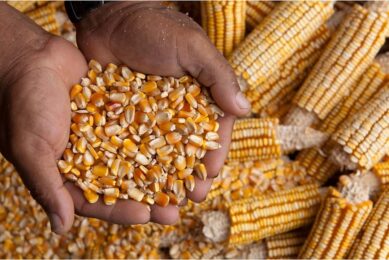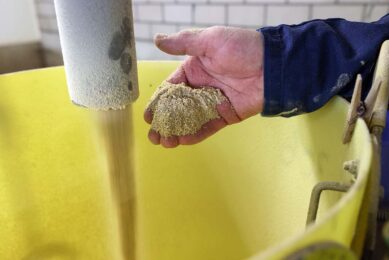4 Technology trends to optimise swine feeding

Swine farmers need to apply several changes to their production systems to meet the growing global demand for pork products, while also considering farming sustainability and ensuring high standards of animal welfare. Here are 4 technological developments that help optimising swine feeding.
Smart swine feeding is an innovative approach based on intensive and integrated use of recent advancement in technological and engineering tools and materials, such as advanced sensors and sensing devices, data processing and machine learning methods, to automatically and continuously monitor and control swine feeding processes and to optimise feeding strategies. The following technology trends are set to improve swine feeding.
 The Internet of things and connectivity
The Internet of things and connectivity
The Internet of things is a new paradigm about the ability of connected devices and high-speed Internet to sense, gather and share data using the internet so that it can be processed and utilised to fulfil common goals. A general emphasis on the Internet of things in feed production is driving platforms to deliver on the latest industrial technologies, such as Ethernet/industrial protocol or cloud connectivity. Sensor functionality can be expanded beyond measuring physical phenomena to the raw data and it will be further integrated with automation technology.
 Automatic feeders
Automatic feeders
In the context of smart swine feeding, automatic feeders are used to provide individual pigs with the right amount and composition of feed at any given time. Each pig wears a unique radio frequency identification tag that identifies it in the feeder. Then, the automatic feeder dispenses the exact amount of feed needed for each pig. Pigs tend to leave the feeder trough empty or leave very small amounts of feed after each visit, thus ensuring that each individual receives the assigned amount of blended feed. The weighing components record the pigs’ weight as they feed. Additionally, feed density needs to be measured weekly and this information will be used to convert feed volumes to feed weights. Finally, all data can be analysed to make real-time management decisions.
 Artificial intelligence
Artificial intelligence
Artificial intelligence is described as human intelligence stimulation in machines that exhibit traits associated with the human mind, such as learning and problem solving. It aims to understand and design systems displaying intelligence properties, such as the ability to learn, to derive knowledge from data, to rationalsze and to take actions to achieve specific goals. Big data combined with artificial intelligence algorithms can be transformed into useful information to improve decision making on pig farms. In the context of smart swine feeding, smart barns and leveraging artificial intelligence technologies control barn environments, organise pig flow and manage data.
 Call feeding station
Call feeding station
A call feeding station is a system for active feeding control in pigs that can be installed in each pen. It produces a jingle, and if the appropriate animal enters the feeder, feed will be provided. Pigs show improved meat quality (0.2% less intramuscular fat, 1.1% less drip loss and 7% more oxidative muscle fibers), lower frequency of abnormal behaviours such as belly nosing and better healing of skin lesions. In addition, this system generally minimises the competitive fighting, improves swine health and welfare and reduces stress levels.
Future perspectives
Advancement in smart swine feeding requires development of integrated user-friendly systems and the end-user training. In addition, smart swine feeding has the potential to be a critical component of innovative swine production systems, which involves changes in processes and elements within the system. Further research is necessary to find the appropriate ways of introducing management interventions based on this information with the intention to improve the production process.
 Beheer
Beheer








 WP Admin
WP Admin  Bewerk bericht
Bewerk bericht